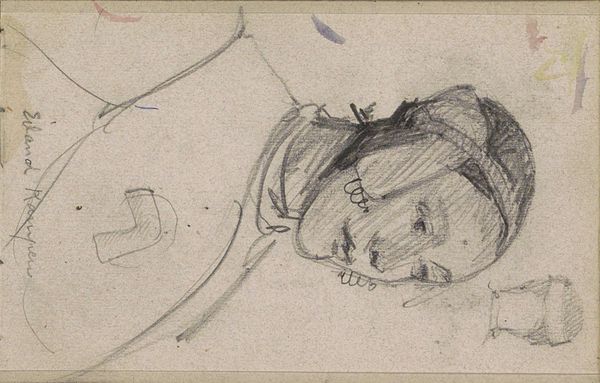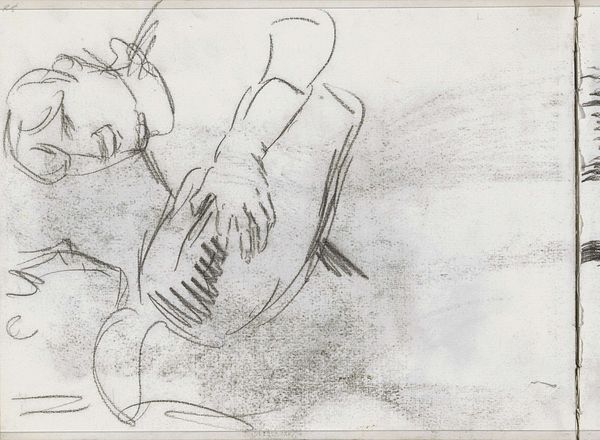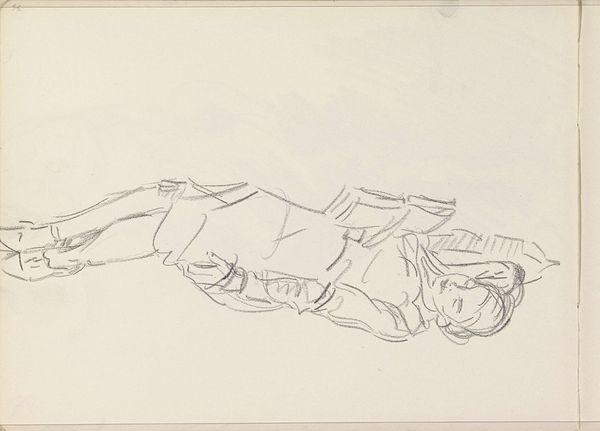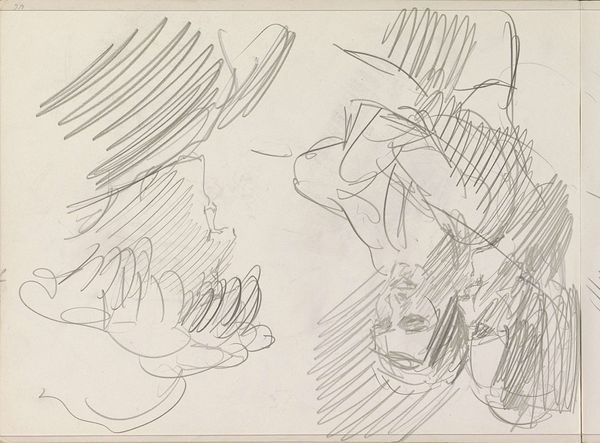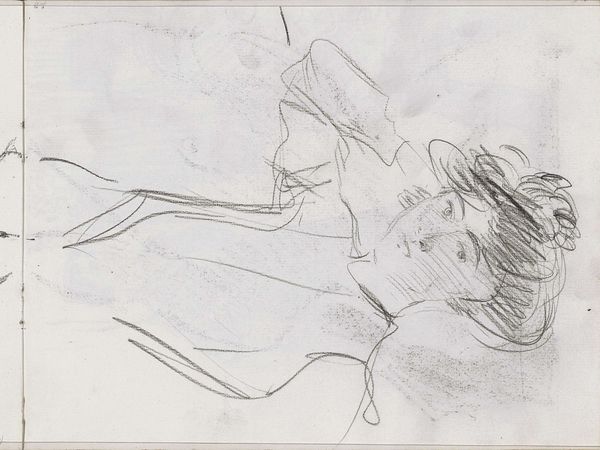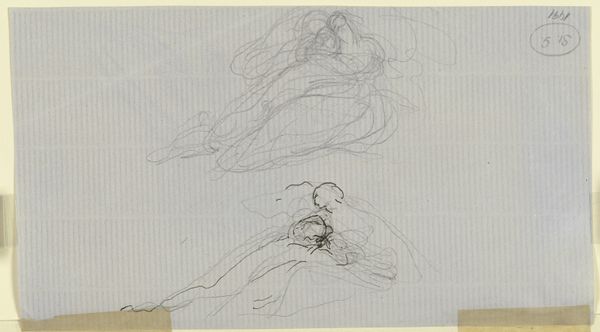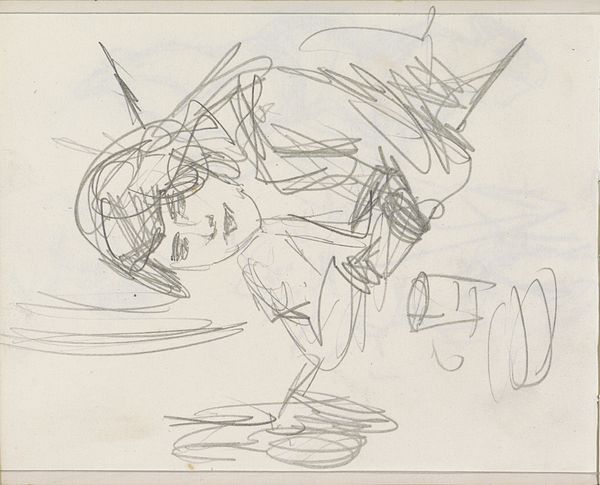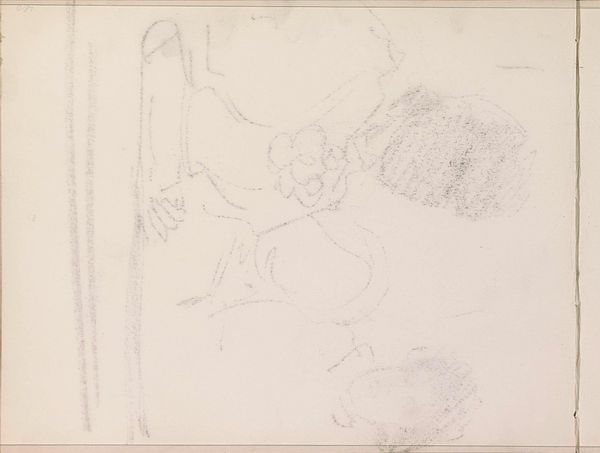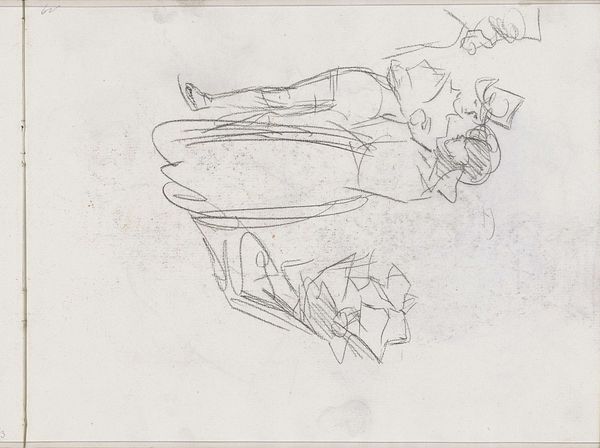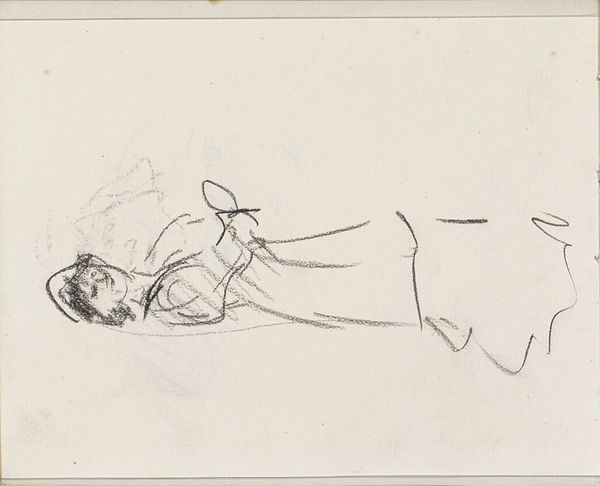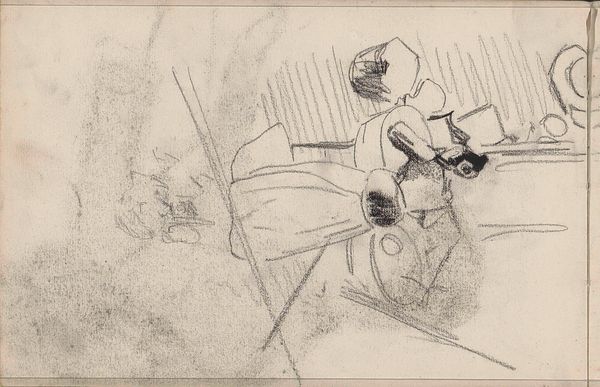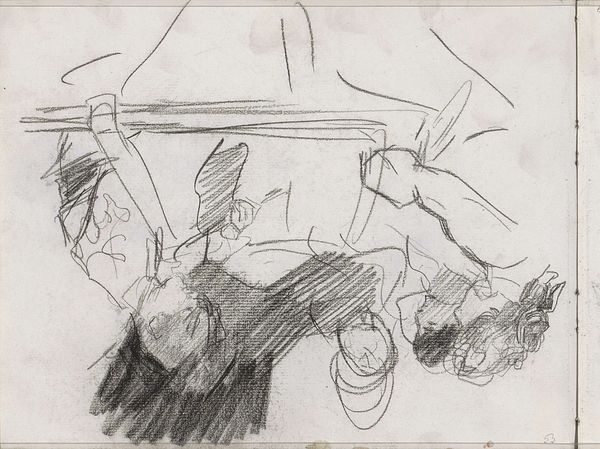
Copyright: Rijks Museum: Open Domain
Editor: This is "Vrouwenhoofd en een liggend vrouwelijk naakt" by Isaac Israels, dated between 1875 and 1934. It’s a pencil drawing and what strikes me immediately is how fleeting and informal the lines seem. What stands out to you in terms of the visual composition? Curator: What is compelling about this work is indeed the seeming incompleteness, which allows us to consider the *process* of art-making. Note how the linear quality prevails, and how Israels employs hatching to create volume and depth without relying on chiaroscuro. How does the composition draw your eye across the page? Editor: I think my eye is drawn to the faces first, then moves along the body of the reclining figure. Do you think there's a deliberate contrast between the more defined head and the more sketched-in body? Curator: Precisely. The juxtaposition emphasizes the intellectual exercise inherent in portraiture versus the exploration of form suggested by the reclining nude. Do you notice the diagonal organization formed between the figures, activating the negative space? The orientation, how one faces forward and one is on their side is also telling. Editor: I see that now. So, the unfinished quality isn't a flaw, but a deliberate choice highlighting the artist's exploration of form and line. The contrast between defined and suggested elements actually guides the eye and creates visual interest. Curator: Precisely. And further, how would you articulate the feeling of impermanence? Does the medium-- the sketch--- amplify this impression for you? Editor: Definitely, the use of pencil adds to that feeling of immediacy. It’s like catching a fleeting moment in time. Curator: An insightful conclusion. Thank you. I also now appreciate the level of intention involved in something that initially seems so casual.
Comments
No comments
Be the first to comment and join the conversation on the ultimate creative platform.

